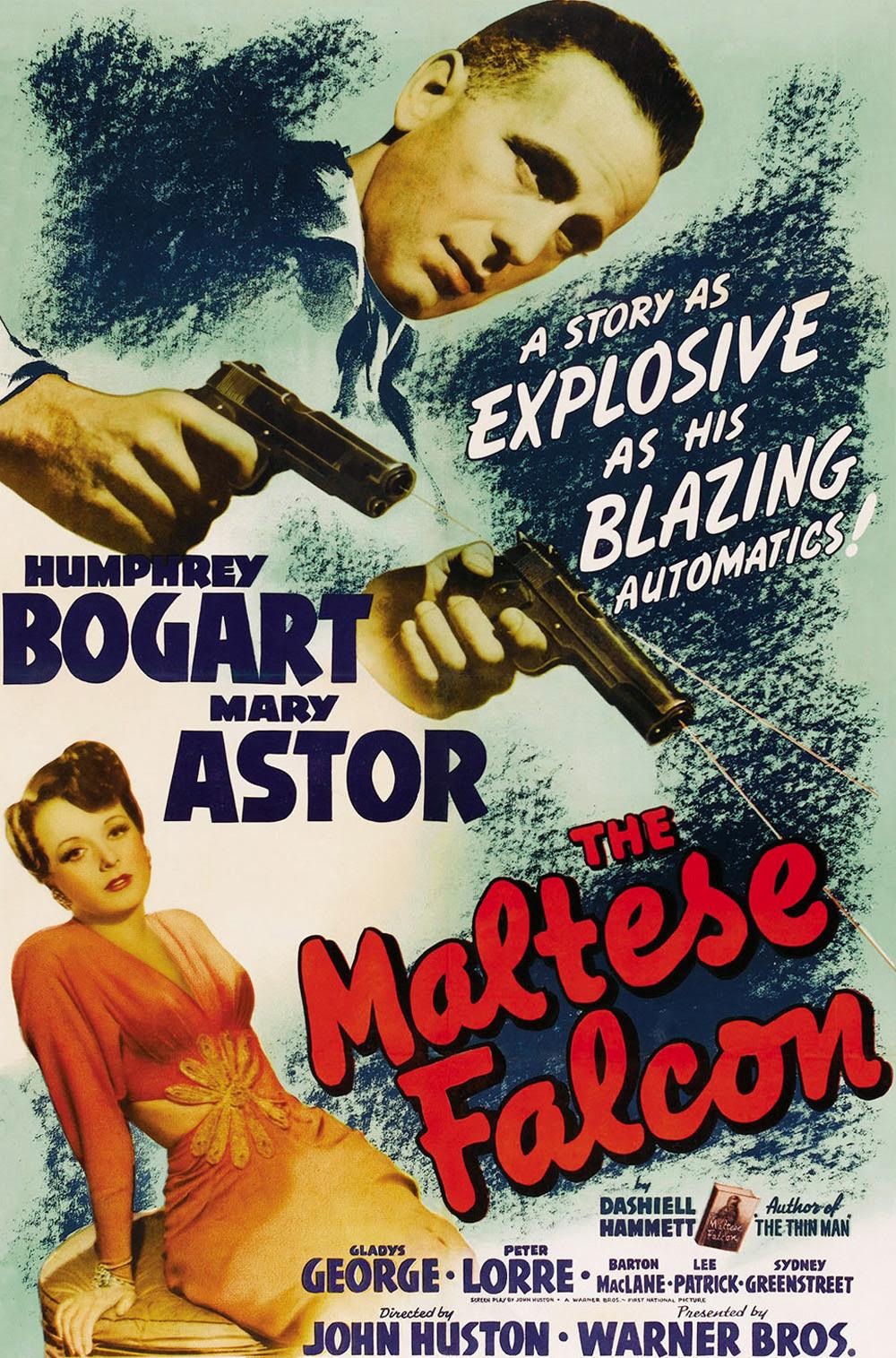
18 Feb Fashion in Classic Film Noir: The Maltese Falcon (1941)
There is just no way to discuss film noir without mentioning Hollywood legend, Humphrey Bogart. Bogart essentially popularized the gangster archetype for the silver screen after his role in The Petrified Forest (1936) and would eventually be a key, top box office draw for Warner Bros up until the early 1950s. It was for his role as Sam Spade in The Maltese Falcon, however, where he set the prototype for the quintessential private detective character on screen for decades to come.
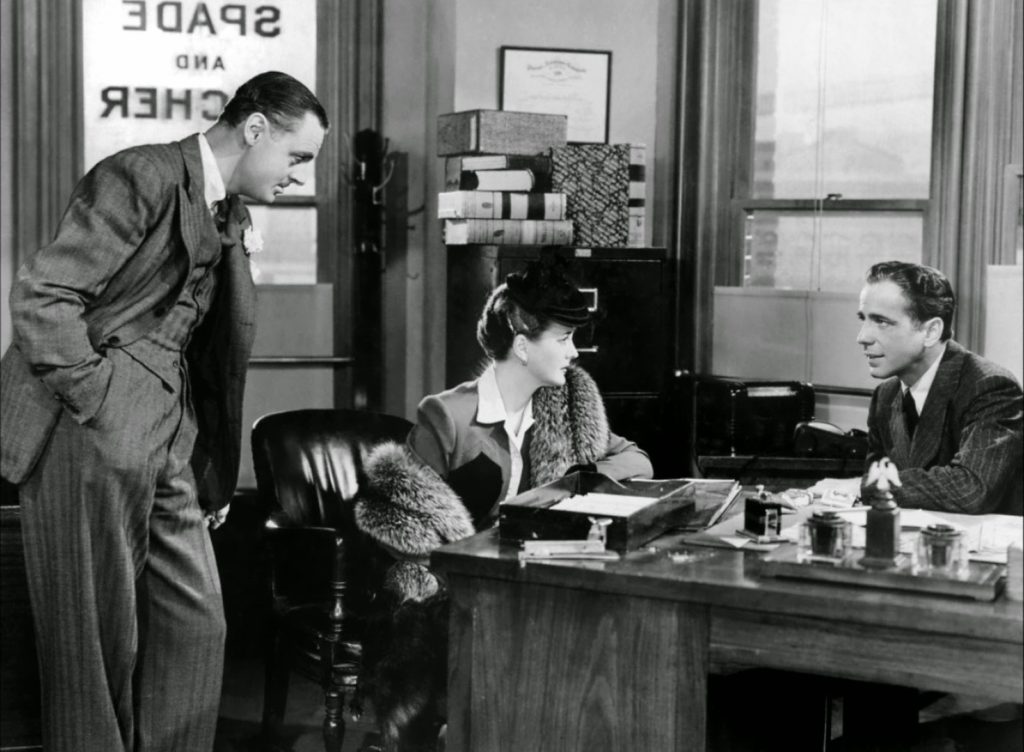
The first scene takes place in your typical New York P.I. office where detective Spade receives a visitor, the stunning Ms. Wonderly (Mary Astor), a fox fur draped over one shoulder, impeccably dressed in a grey skirt suit, and that hat and veil! She’s obviously a wealthy lady, so Spade is obviously interested, though he doesn’t show it. He’s far cooler than his partner, Miles Archer (Jerome Cowan).
She approaches him with a story of her sister, Corinne, whose run away with a man named Floyd Thursby, who Wonderly insists in no good.
A simple missing person case. Easy enough, right?
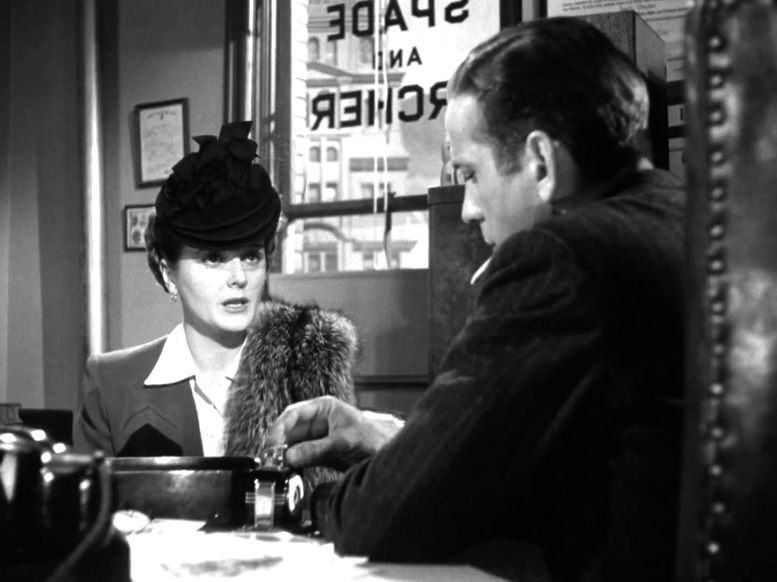
The veil that shadows her eyes is actually foreshadowing her character, who spins a web of lies and deceit throughout the film. Even though she talks innocently and acts nervous and worried, that veil tells you there’s something else there—she’s shadowy, untrustworthy, she’s hiding something.
Spade senses it, but his partner does not. (“Oh, she’s sweet. Maybe you saw her first, Sam, but I spoke first.”)
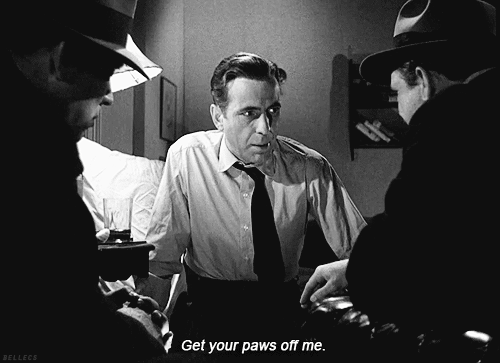
Side note: this film is alone worth watching for some of Humphrey Bogart’s most famous lines and the (now) humorous slang.
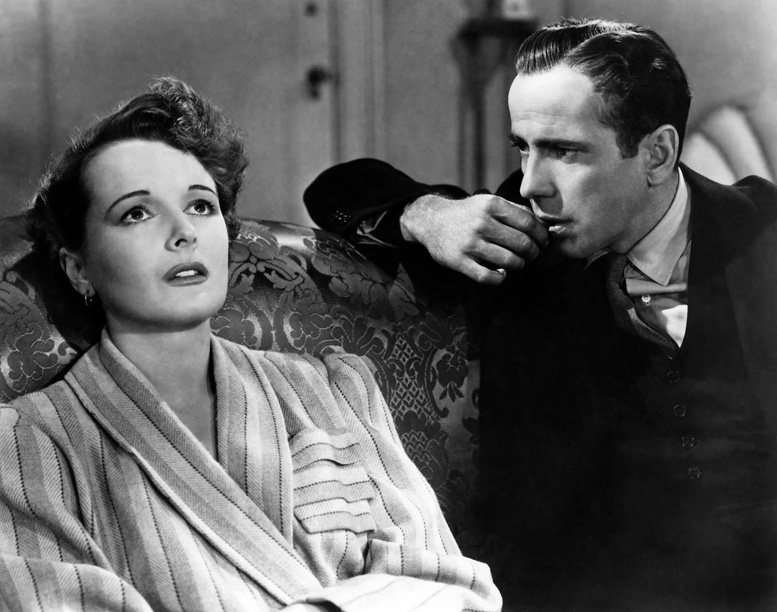
The next time we see Ms. Wonderly, both Thornsby and Archer are dead, and Spade is not at all rattled or upset (in fact, he’s already given the order to change the name on his door from ‘Spade and Archer’ to ‘Samuel Spade’). Ms. Wonderly, however, is so distressed she couldn’t even get dressed and greets Spade at her door in her robe.
Scandalous.
She confesses immediately the story she previously told was a lie (he tells her he already knew) and that her real name is Brigid O’Shaughnessy. He still doesn’t believe her, nor does he really care that she thinks herself in danger, but he does want her money, and takes from her $500 and swipes an extra key to her apartment in exchange for his help.
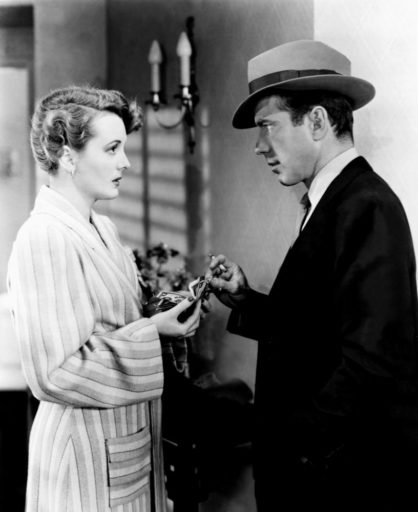
He sure is cold.
Enter Joel Cairo (Peter Lorre), the slender, dubious, curly-haired, multi-passport carrying, gardenia-perfumed man with an accent like Igor from Frankenstein.
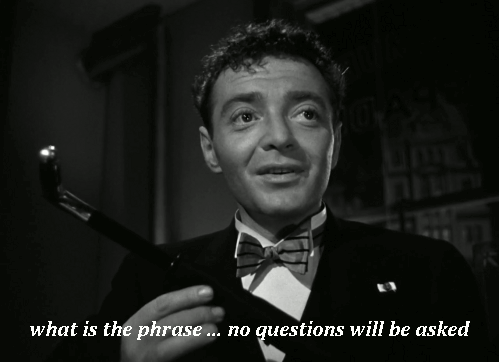
In his initial conversation with Spade, you’ll notice how he so obviously exposes the ring on his pinky finger and the way he toys with his umbrella, bringing the end piece near his mouth as he talks.
The way this character is described in the original novel by Dashiell Hammett is very effeminate, and underlying homosexuality is not at all uncommonly found in old Hollywood films either—they just had to be sneaky about it because of The Code.
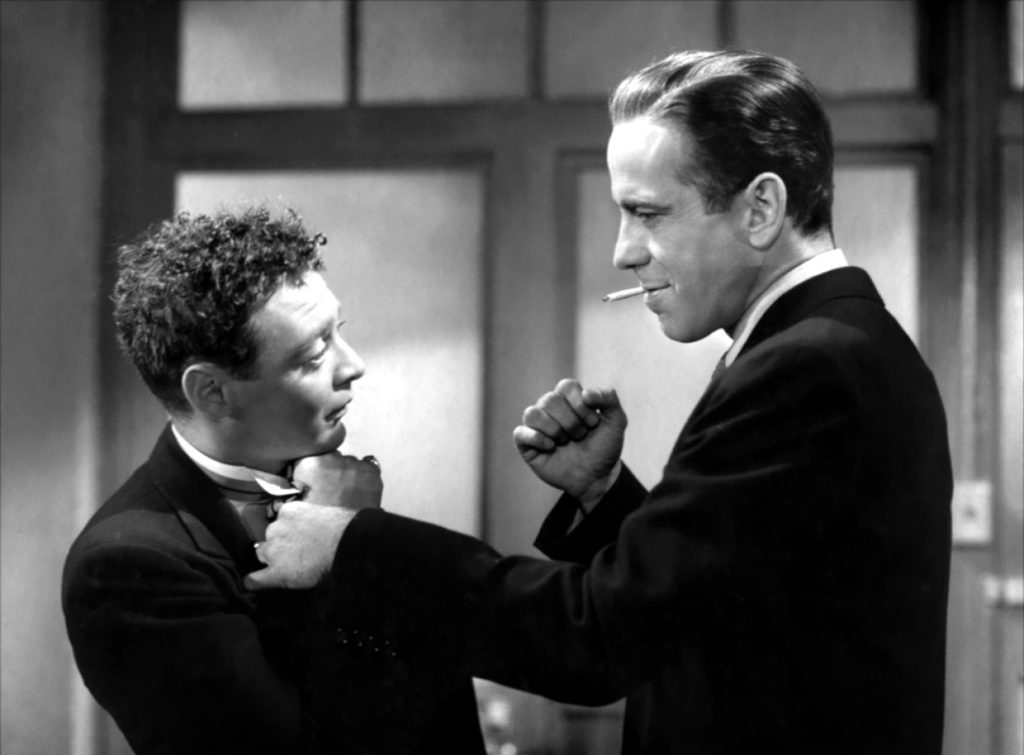
Cairo is a marvellous contrast to Spade’s excessive masculinity (see photo above), and the little details in Cairo’s clothes (his collection of pretty bowties, for example) really illustrate that. The way Lorre carries this character complements as well, besides, he’s so brilliant I had to watch the scene multiple times.
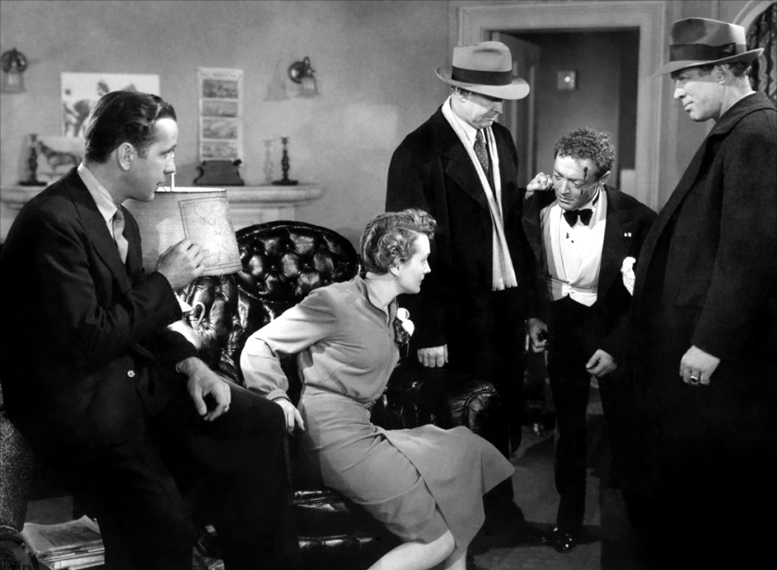
O’Shaughnessy’s wardrobe is modest (high necklines), respectable (grey, nothing too leggy), and ladylike (ruffles and flower adornments), though she does very unrespectable and unladylike things such as assaulting Cairo multiple times.
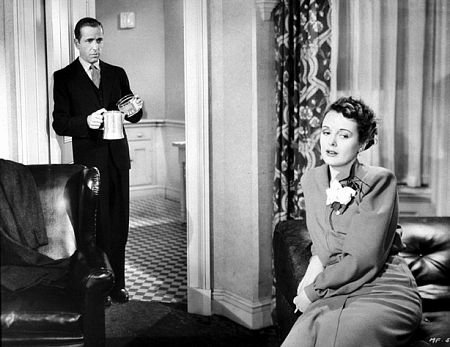
Her clothes and manner are a contrast to her inner character-even she admits that she’s done some terrible things in her life. Yet for all her trying to hide the truth by manipulating the outside, it is all revealed in the end.
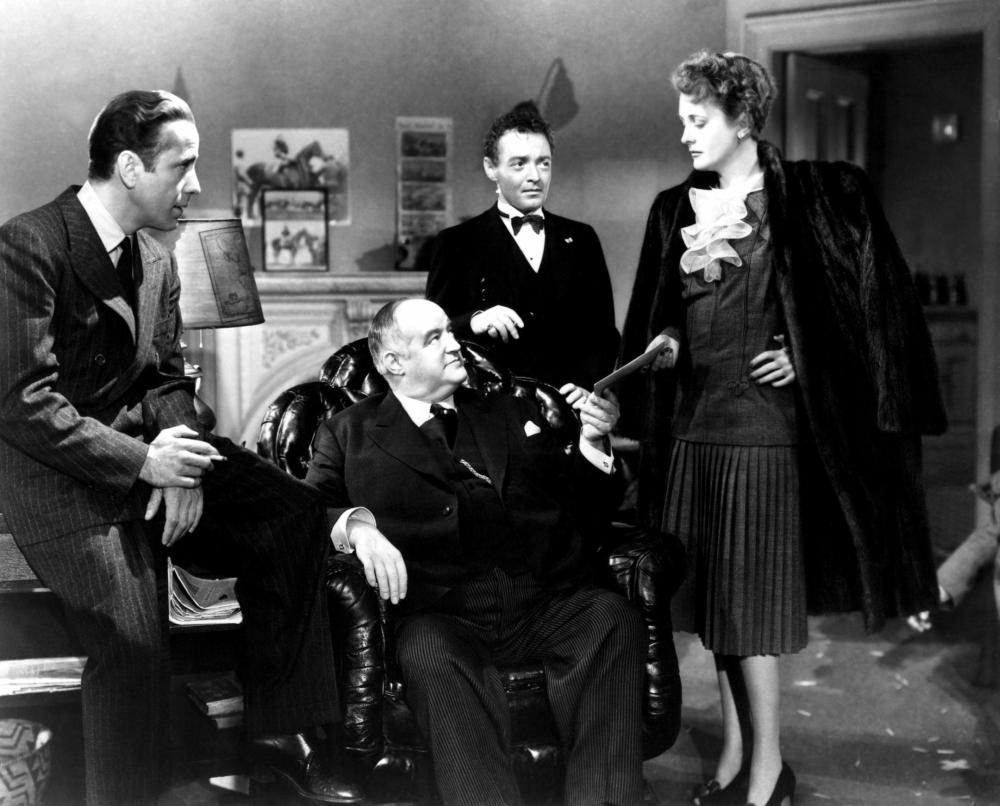
Sources used:
http://www.tcm.com/tcmdb/person/18290%7C71928/Humphrey-Bogart/


